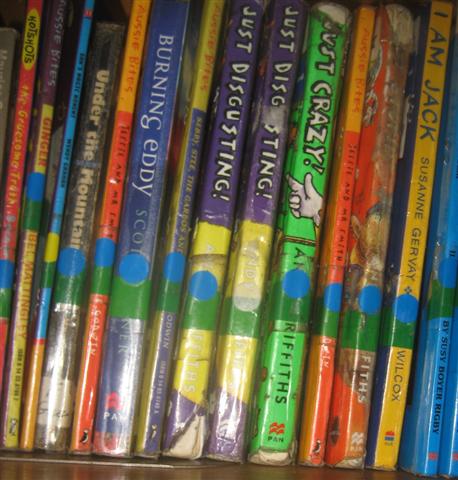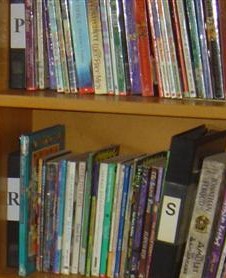Collection Management
Nearly all librarians everywhere identify patron service as their first order ethical principle. Most also identify intellectual freedom, preservation of the record, equality of access, and information literacy as among these values. (Dole, Huyrych, & Koehler, 2000)
1.4 Knowledge of library and information management (have a specialist knowledge of information, resources, technology and library management)
1.4.1 • Understand that professionally managed and resourced school libraries are crucial to the achievements of the school community.
1.4.2 • Have a rich professional knowledge of national standards for library and information management.
1.4.3 • Have a comprehensive understanding of national standards for information retrieval.
2.3 Library and information services management (provide exemplary library and information services consistent with national standards)
2.3.1 • Ensure that the library's policies and procedures implement the school's mission.
2.3.2 • Provide exemplary reference and information services to the school community.
2.3.3 • Strategically plan and budget for improvement in library and information services and programs.
2.3.4 • Apply information management practices and systems that are consistent with national standards 4.
To support equity of access, the ASLA Standards recommend that teacher librarians have a comprehensive knowledge of relevant standards such as the national standards for information retrieval (1.4.3) and the SCIS Standards for Cataloguing and Data Entry and consistently apply them in their library managment practices (2.3.4).
In an education climate of continual change, our TL pragmatically sees his role as responding to the needs of his primary clients — the students and staff. His strategic decisions about the libraries collections are affected by finance, accommodation and roles and responsibilities.
Major considerations in the management of the collection are :
- School priorities (school literacy program)
- Access (cataloguing; circulation; resource promotion)
- Accountability (reviews, stocktake, weeding, copyright)
Centenary Library 2008 In 2008 the TL was responsible for all facets of library management, and the ICT budget. He organised the move to the new library and purchased equipment and furniture for managing and accomodating the collections. He shared responsibility for access and circulation with the library aide. Very little resource promotion occured, particularly of teacher reference. These materials were purchased by the HOC and were often given to the teachers who had requested them without being catalogued and accessioned. | New Library 2011 In 2011, the TL and I shared responsibility for library management, including the ICT and library budgets. To facilitate this we placed budget spreadsheets in a shared library directory on the school network so that all library staff could access it and add their orders to the spreadsheet. The library aide and I shared responsibility for collection development, accomodation and circulation. The HOC continued to purchase curriculum and teacher reference materials. |
School priorities
Management of the library's collection reflects the whole-of-school emphasis on the development of literacy skills. The main goal of the library program is to support the school's literacy program through the Accelerated Reader (AR)program. Management priorities relate to selection, acquisition, cataloguing and circulation of the AR collection. Currently, AR is used in Year 4 to 7. There are plans to begin Year 3 students on AR in Term 4 each year. Teachers believe that this will make the transition to Year 4 smoother. .jpg) | The school priorities remained the same, with the library primarily supporting the implementation of Accelerated Reader and expanding the use of the program to Year 3. In addition the Learning Support Committee put in place a procedure for Year 2 teachers to request advanced Year 2 readers be allowed to use the program. the Year 3 teachers felt that their students would benefit from beginning AR earlier in the year. The introduction of Prep has caused a shortage of homework reading materials particularly in the higher levels as many of the children are reading higher levels earlier. The library staff supported the introduction of AR just before Easter. The teacher-librarians and the chair of the Literacy Commitee were not in favour of this initiative. But the initiative was implemented in response to requests from parents/carers of 'gifted' children who wanted their children extended. My experience this year has been that the Year 2 children doing Accelerated Reader were not well supported by their classroom teachers. This mibht have been because they did not complete the AR professional development session at the beginning of the year, and so did not understand the level of commitment necessary from teachers. |
Access
Providing easy, equitable access is important to effecitive library management.
Management of the library's collection reflects the whole-of-school emphasis on the development of literacy skills. The main goal of the library program is to support the school's literacy program through the Accelerated Reader Program. Management priorities relate to selection, acquisition, cataloguing and circulation of the Accelerated Reader (AR) collection. Access to library resources is facilitated through effective, efficient professionally-managed systems (2.1.2).The TL places a strong emphasis on ensuring that the day-to-day operations of the library, such as resource accession and circulation procedures are efficient.The library aide is well trained in cataloguing (including the use of SCIS) and accessioning resources. She does all of the cataloguing and processing of books. Procedures to promote efficient circulation of resources are in place. No library lessons are scheduled between 9:00 and 9:30 am. Returns are due back to the library by 9:30 am each morning and processed before library lessons start. To keep up with the demand for AR books, overdue reminders are emailed to staff each week. Each term the class with the lowest number of overdues wins a popcorn party, which is held in the library at lunchtime. The non-fiction section is organised according to the Dewey Decimal system, and the shelves have subject/topic labels. To assist students to select and shelve books, the AR collection is organised in alphabetical order according to reading range. The spines of the books have colour-coded stickers to denote the reading range (bottom) and interest level (top). Alphabetical shelf dividers are used in the fiction section.
The TL, library aide and student volunteers maintain efficient circulations. Volunteers assist by processing loans and returns and shelving books before school, during lunch breaks and after school. | This year I have collaborated with the teacher aide to make accommodation changes to the main collection to improve access. Teachers The little people With the introduction of Prep, more Years 1 and 2 students are reading chapter books. Access to these books has been improved by placing short chapter books suitable for younger readers on lower shelves that are easier and safer for them to reach. The books have been organised in series to help the children find the books they like. To help monitors return these books to the correct section, each has an orange dot sticker on the back, and the shelves are labelled with the series name. .jpg) White and Yellow AR sections We trialled a number of options for improving access to the white and yellow levels. When we got out Term 4 budget, I bought a white Easybox for the white level. The box is more suitable for the mix of picture books and chapter books and easier for children to reach. Now there is more space on the bookshelf to spread out the yellow level. Older readers |
Accountability
Stocktaking, weeding and copyright are three aspects of accountability in library management practices.
Stocktaking Weeding
Copyright The increase in the use of ditigal resources raises additional copyright issues. | Stocktaking Weeding Copyright |
Staffing
A factor that impacting upon the effectiveness of management practices is staffing.
The Resource Centre Guide outlines the duties of the teacher librarian and the library aide. The school has a responsibility to provide ongoing professional development for library staff. Teacher librarians can access relevant professional development through membership of professional associations. Examples of training opportunities can be found on the State Library of Queensland and the NSWnet websites. Online professional publications include, for example, the School Library Journal and the Informed Librarian Online (Subscription required). Teacher librarians can also access a wealth of professional information through national, state and local networks, such as the such as OZTL_NET Listserv and the Teacher Librarians in Brisbane North and Central West listserv. | This year I have share responsibility for managing the school library with the TL. We have a full-time library aide who also runs the instrumental music program and the Early Literacy Foundation (ELF) support program. Sharing the role of TL has had it's challenges. We shared the teaching workload equally. We take joint responsibility for ICTs. In consultation with each other, I spent the library budget and he spent the ICT budget. We maintained budget spreadsheets that provided running totals. To facilitate communications we worked a common hour in the middle of the day on Wednesday, stayed in regular email contact and kept a shared diary as a communications book. To ensure that teacher's requests are dealt with as soon as possible, teachers email both TLs and the library aide and the first available person deals with the request. As the workload increased this year, extra teacher aide hours were negotiated so that we could use some of the projects resulting from the stocktake to train an aide to replace the full-time library aide who will leave at the end of 2012. |
Resource Promotion
Library management also involves effective promotion of resources.
To ensure that use of library collections is maximised, it is important to promote library services and resources through a range of media and activities. These might include contests, author visits, book fairs, book circles, displays, reading challenges and online activities such as blogs and reading raps. Education Queensland offers a range of online activities through The Learning Place. The NSW School Libraries and Information Literacy Unit, for example, offers reading raps on its website. Brisbane City Council libraries are keen to help schools organise author visits. Because of the success of the AR program little has been done to promote the library's resources in creative, fun ways. There is ample scope for involving staff members in providing new and exciting promotional activities. | This year we have done very little promotion of resources. We use spinners and a shelf in the library to display new books. In addition we presented the books that were shortlisted for the CBCA book of the year awards and some of the series purchased this year. Next year I plan to feature new resources at staff meetings and place alerts on the staff and student notices section of the intranet. |
REFLECTION
Massive changes are underway in the management of our library resources. There is still a lot of work to be done, particular in the compactus. The teacher reference section is so overcrowded that it is difficult to shelf books. With the addition of books that have been sent to the library to be accessioned, and the end of year return of syllabus boxes, it will be even more overcrowded. The stocktake of the teacher reference material is still underway. At my suggestion, the TL has a volunteer that comes in once a week to help to stocktake that section. They are weeding and relocating the collection as they stocktake. The audio-visual section will be the next area for stocktake. It also needs to be weeded. Replacement items will be ordered next year when teachers are more familiar with the national curriculum. The reference materials like encyclopedias are rarely used. Soon they will be out of date. So they should be moved out of the compactus to the general collection or disposed.
References
Dole, W., Huyrych, J. and Koehler, W. (2000). 'Values for librarians in the information age'. Library Management, 21 (6), 285-297.

